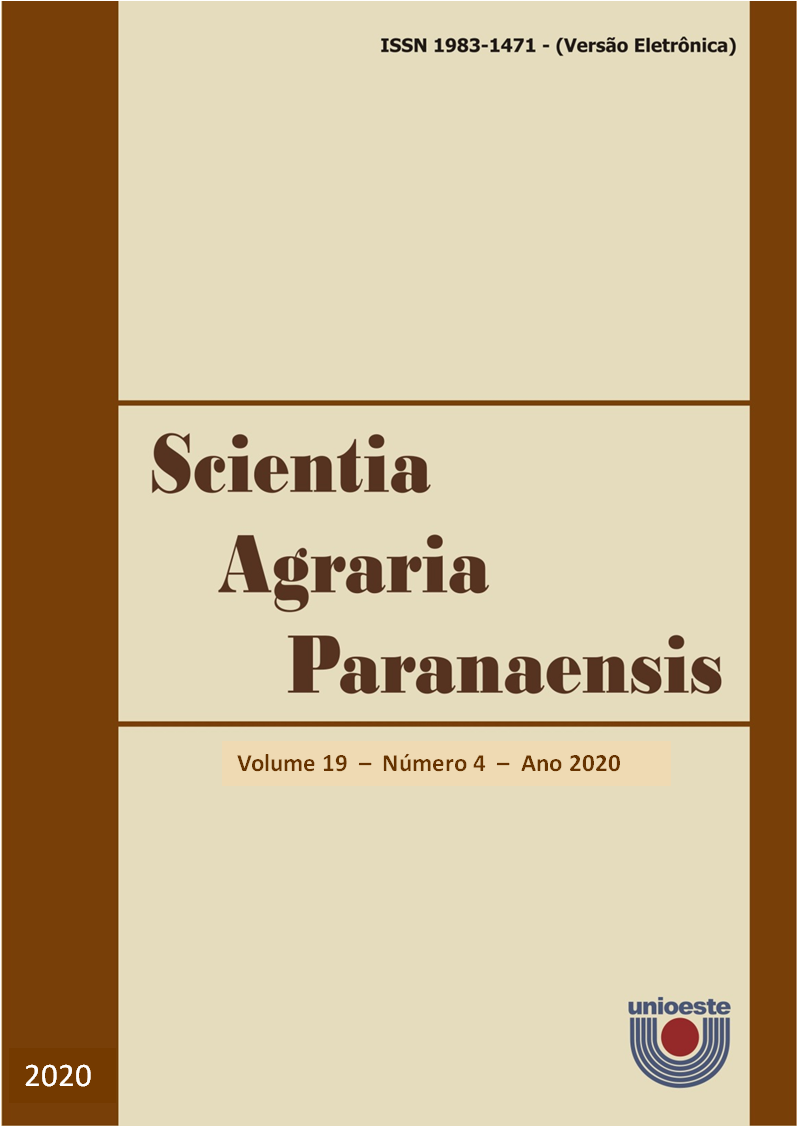Corn response to phosphogypsum, base saturation and lime application method
DOI:
https://doi.org/10.18188/sap.v19i4.25008Resumo
The lime (L) and phosphogypsum (G) promote changes in the chemical attributes of the soil that can alter the development of corn. The objective was to evaluate morphological and yield components of corn after liming and G and to correlate them with yield. The treatments consisted of a 2 x 4 + 3 factorial, with two methods of application of L: surface (SL) and incorporated (IL) to obtain different levels of base saturation (BS): 44, 60, 70 and 90%. Three additional treatments were evaluated involving the use of L and G applied on the surface, being: BS 60% + 3.71 Mg ha-1 of G (60G50); BS 70% + 3.71 Mg ha-1 of G (70G50) and BS 70% + 7.42 Mg ha-1 of G (70G100). Plant height (PH), ear insertion height (EIH) and stem diameter (SD) were not influenced by the treatments. The SL increased the length of the ear (LE), number of grains per row (NGR) and mass of a thousand grains (TMG) up to BS of 72, 80 and 72%, respectively. Thus, there were no advantages of higher base saturation (BS 90%). The combination of L and G promoted improvements in ear diameter (ED), NGF, LE, TMG. The yield in IL was 445 kg ha-1 higher than SL, however when combining G and L the production increased 6 to 12% in relation to BS 44% SL. BS% levels in IL did not influence any response variable. Grain yield was positively correlated to ED, TMG, LE and PH.
Downloads
Publicado
Como Citar
Edição
Seção
Licença
Aviso de Direito Autoral Creative Commons
Política para Periódicos de Acesso Livre
Autores que publicam nesta revista concordam com os seguintes termos:
1. Autores mantém os direitos autorais e concedem à revista o direito de primeira publicação, com o trabalho simultaneamente licenciado sob a Licença Creative Commons Attribution que permite o compartilhamento do trabalho com reconhecimento da autoria e publicação inicial nesta revista.2. Autores têm autorização para assumir contratos adicionais separadamente, para distribuição não-exclusiva da versão do trabalho publicada nesta revista (ex.: publicar em repositório institucional ou como capítulo de livro), com reconhecimento de autoria e publicação inicial nesta revista.
3. Autores têm permissão e são estimulados a publicar e distribuir seu trabalho online (ex.: em repositórios institucionais ou na sua página pessoal) a qualquer ponto antes ou durante o processo editorial, já que isso pode gerar alterações produtivas, bem como aumentar o impacto e a citação do trabalho publicado (Veja O Efeito do Acesso Livre).
Licença Creative Commons
Esta obra está licenciada com uma Licença Creative Commons Atribuição-NãoComercial-CompartilhaIgual 4.0 Internacional, o que permite compartilhar, copiar, distribuir, exibir, reproduzir, a totalidade ou partes desde que não tenha objetivo comercial e sejam citados os autores e a fonte.


